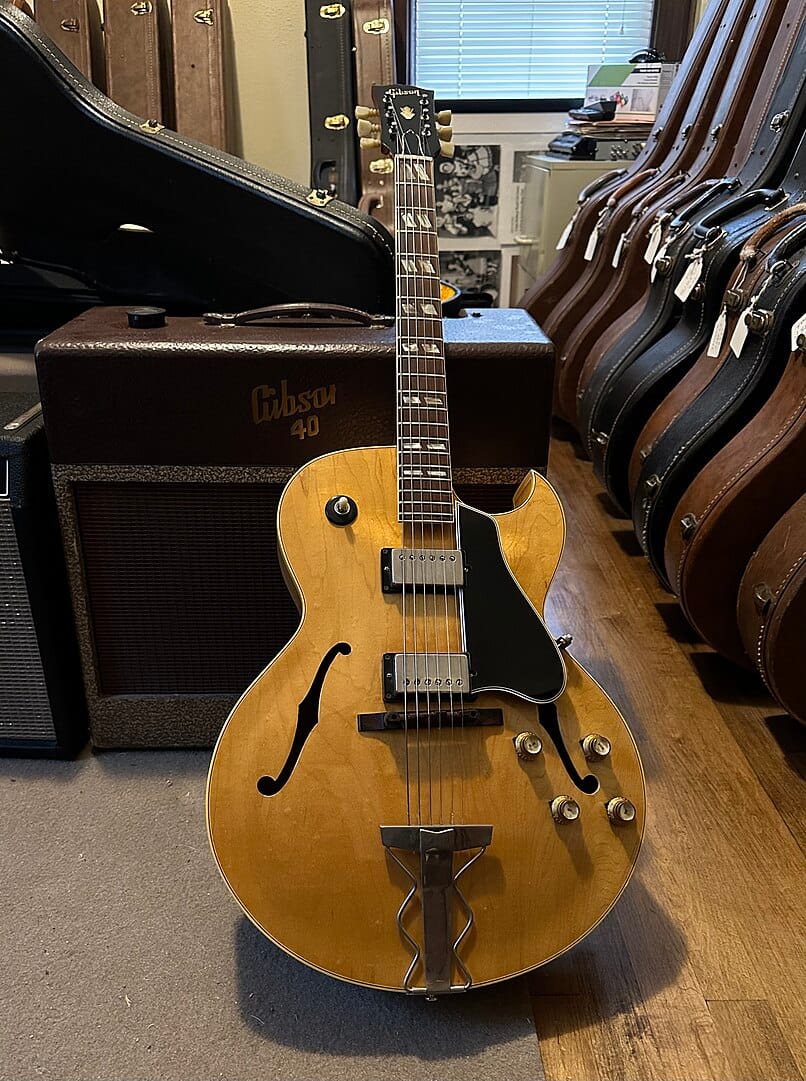Jim Hall, The Subtle Innovator of Jazz Guitar
Jim Hall, an iconic figure in the world of jazz, is celebrated for his profound influence on the development of jazz guitar. Hall's career spanned over five decades, during which he crafted a unique sound characterized by understated elegance, sophisticated harmonies, and a masterful approach to improvisation. This blog post delves into the life, music, and legacy of Jim Hall, exploring the nuances that made him a revered figure in the jazz community.
Early Life and Influences
Born in Buffalo, New York, in 1930, Jim Hall grew up in a musical environment that nurtured his early interest in jazz. His initial foray into music was through the piano, but he soon discovered his passion for the guitar. Hall's early influences included the likes of Charlie Christian and Django Reinhardt, whose styles contributed to his developing musical vocabulary. However, it was his encounter with the cool jazz sounds of the West Coast in the 1950s that significantly shaped his musical direction.
Breakthrough and Collaborations
Jim Hall's breakthrough came in the late 1950s when he moved to Los Angeles. There, he became an integral part of the Chico Hamilton Quintet, a group known for its innovative approach to jazz. Hall's tenure with the quintet was marked by his inventive use of counterpoint and harmony, which added a new dimension to the group's sound.
The 1960s saw Hall's reputation grow, leading to collaborations with some of jazz's most esteemed artists, including Sonny Rollins, Bill Evans, and Paul Desmond. His partnership with Evans, in particular, is celebrated for its intimate interplay and mutual understanding, qualities that are vividly captured in their recordings together, such as the acclaimed album "Undercurrent."
https://open.spotify.com/album/3b2s2A8DPISbaQNxhrEsGQ?si=EX5KbP4ASCaFt-qwT27W8w
Musical Style and Innovations
Jim Hall's approach to the guitar was distinguished by its subtlety and nuance. Eschewing the more aggressive, high-volume playing of some of his contemporaries, Hall opted for a more introspective sound characterized by its lyrical quality and delicate phrasing. His solos often unfolded like a narrative, each note and chord intentionally placed to convey emotion and story.
Harmonically, Hall was a pioneer, integrating elements from classical and contemporary music into his playing. He was known for his inventive chord voicings and the use of space, which allowed his music to breathe and resonate more deeply with listeners. Hall's compositions, such as "Concierto de Aranjuez" from the album "Concierto," showcase his ability to blend diverse musical elements into a cohesive and compelling jazz idiom.
https://open.spotify.com/track/0QVvZNHwBOPAGXgUfkfL5P?si=834754a465244e95
Teaching and Legacy
Beyond his performances and recordings, Jim Hall was also a dedicated educator, imparting his knowledge to the next generation of musicians. He taught at institutions such as the New School for Jazz and Contemporary Music in New York City, where he influenced countless young guitarists with his philosophy of music and guitar playing.
Jim Hall's legacy is one of musical integrity and innovation. He pushed the boundaries of jazz guitar, influencing not just his contemporaries but also future generations of musicians. Hall's discography, marked by a relentless pursuit of musical expression and exploration, remains a treasure trove for jazz enthusiasts and guitarists alike.
His Guitars
Jim Hall's approach to jazz guitar was as much about the notes he chose to play as it was about the instruments he played them on. His choice of guitars contributed significantly to his distinct sound, characterized by warmth, clarity, and subtlety. Hall was known for his preference for guitars that offered a clean, unadulterated tone, which allowed his innovative harmonic concepts and intricate interplay to shine through.
The Gibson ES-175

One of Jim Hall's most iconic instruments was the Gibson ES-175, a guitar that became synonymous with his early sound. Introduced in the 1940s, the ES-175 was known for its versatile tone, suitable for both rhythm and lead playing. Hall's use of the ES-175, particularly in the 1950s and 1960s, showcased the guitar's rich, warm sound and its capacity for both articulate attack and smooth, mellow sustain. The ES-175's hollow body design contributed to its resonant tone, making it a favorite among jazz guitarists. Hall's nuanced playing on this instrument helped to define the sound of jazz guitar during this era.
The D'Aquisto Guitars
Later in his career, Jim Hall formed a close relationship with renowned luthier James D'Aquisto, who is often considered the finest archtop guitar maker of the modern era. D'Aquisto created several custom guitars for Hall, each designed to meet the guitarist's specific preferences for sound, playability, and aesthetics. These instruments were known for their exceptional craftsmanship, superior tonal qualities, and their ability to project a clear, articulate sound even at low volumes, which was perfectly suited to Hall's playing style.
One notable model was the D'Aquisto New Yorker, which Hall used extensively in recordings and performances. This guitar was characterized by its deep, complex sound and exceptional balance across the tonal spectrum, enabling Hall to explore a wide range of musical textures and dynamics. The collaboration between Hall and D'Aquisto not only resulted in some of the finest jazz guitars ever made but also pushed the boundaries of guitar design, influencing the development of archtop guitars for future generations.
Conclusion
Jim Hall's contribution to jazz cannot be overstated. His unique approach to the guitar, characterized by its lyrical phrasing, sophisticated harmonies, and understated intensity, has left an indelible mark on the genre. Hall's music transcends time, continuing to inspire and influence musicians around the world. As we reflect on his life and work, we are reminded of the power of music to communicate profound emotions and ideas, a principle that Jim Hall embodied throughout his illustrious career. His legacy is not just in the notes he played but in the spaces between them, in the stories he told through his music, and in the countless musicians he inspired along the way. Jim Hall remains a towering figure in jazz, a guitarist whose voice was as distinctive as it was influential, and whose artistry continues to resonate with listeners and players alike.

